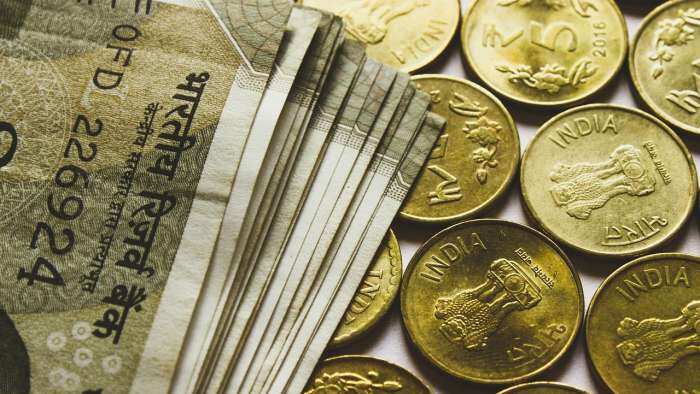Want to save Income Tax? These 5 options other than 80C will help you
Almost every saving made in schemes like provident funds, fixed deposits, term deposits, life insurance, mutual funds and others help you avail up to Rs 1.5 lakh tax deduction under section 80C.

One of the most traditional and popular in tax benefit would be undoubtedly section 80C of Income Tax Act. Almost every saving made in schemes like provident funds, fixed deposits, term deposits, life insurance, mutual funds and other schemes notified by government, are allowed to avail up to Rs 1.5 lakh tax deduction under section 80C. However, once again the time of taxes have arrived and many taxpayers are busy calculating their taxes and claims which can be made under Income Tax Return (ITR) filing. While the government does takes taxes from your income and income from other sources, however, it also gives the benefit to reduce those taxes by filing few forms and claim a certain sum on either be loans or investment.
Interestingly, Archit Gupta, Founder & CEO ClearTax believes many taxpayers do not think beyond section 80C. He says, “For smart savers, there is a whole gamut of tax-saving options and this article aims to spread the word about those. With awareness, India can truly be a tax savers’ paradise.”
Hence, if you are trying to figure out saving options, here’s a list of 5 tax saving options which are beyond section 80C and can help you save big, as per ClearTax.
1. Understand Section 80 is much more than 80C
Section 80D - Premium for health insurance. Under this, up to Rs 75,000 tax benefit is given. This includes Rs 25,000 for self-spouse-children, less than 60 years of age; while Rs 50,000 for senior citizen parents or self.
Section 80EE - Interest component of home loan EMI for home-owners having only one property on the date of sanction and on other conditions being met. Additional relief of up to Rs 50,000.
Section 80G - Charitable donations to approved organizations (e.g. Central/State Relief Fund. Exemption is given on 50% or 100% of the money donated (cash donations don’t apply).
Section 80GG - If you live in a rented house and do not have HRA in your salary. Tax exemption in lower of the following - 25% of the total income; Rs 5,000 monthly; Actual rent minus 10% of the total income.
Section 80TTA - Interest from savings account. Up to Rs 10,000 exemption is given, provided the income is included in the total income.
2. Bank on home loan under Section 24
If you have a housing loan, 80C has already enabled you to claim tax exemption on the principal component of your loan EMI. Section 24(b) gives you an option to claim a deduction of Rs 2 lakhs for interest portion of your home loan.
This can be reduced from your taxable earnings under Income from house property, if there is no rental income, you can report a loss under the head house property. This loss can be adjusted from other heads of income like salary, other income etc.
3. Make maximum use of House Rent Allowance (HRA)
Most companies make HRA a part of the salary, which you can claim if you are living on rent. The maximum amount you can claim is the lowest of the following.
- The actual HRA given by your employer
- 50% of your salary (metro-residing individual) and 40% of the salary (for non-metro residing individual)
- Actual rent paid minus 10% of annual salary
Like mentioned in the above table, Section 80GG allows you to save atleast some tax on the rent you pay, if you do not get HRA from your employer.
#LIVE | जानिए क्या है नौकरीपेशा लोगों के लिए 'खुशखबरी' #AapkiKhabarAapkaFayda में @pallavi_nagpal के साथ। https://t.co/gxYQTWmzzZ
— Zee Business (@ZeeBusiness) March 5, 2019
4. Standard deduction of Rs 40,000
Don’t forget to avail the standard deduction of Rs 40,000, if you are a salaried person. Budget 2018 saw the re-introduction of Standard Deduction (after it was scrapped in 2005). It not only saved taxes but also minimized paperwork. With the standard deduction,
Finance Minister Arun Jaitley eliminated the transport allowance of Rs 19,200 and Rs 15,000 of medical reimbursement that was in practice till then. If you are filing your income tax returns online, this will be automatically deducted from your taxable income. It has been enhanced to Rs 50,000 for FY 2019-20 and onwards.
5. Know full potential of NPS
We all know that your NPS contribution is eligible for tax deduction under 80C. But not many are aware of its added tax perks. You can claim Rs. 50,000 deduction under section 80CCD(1B). This is over and above the Rs 1.5 lakhs available under 80C. You can choose the asset classes as per your risk tolerance. For instance, if you are a risk seeker, you can choose a higher equity and low debt ratio mix of investments.
In short, do not stop your tax-saving endeavours at 80C. There is a slew of possibilities (like the ones mentioned above) for you to explore. After all, a rupee saved is more than a rupee earned in these times.
Hence, if you are planning to save taxes, then go out of the box and explore many investment options and enjoy benefits under above mentioned sections of IT ACT apart from section 80C.
Get Latest Business News, Stock Market Updates and Videos; Check your tax outgo through Income Tax Calculator and save money through our Personal Finance coverage. Check Business Breaking News Live on Zee Business Twitter and Facebook. Subscribe on YouTube.
RECOMMENDED STORIES

Power of Compounding: How soon will monthly SIP of Rs 6,000, Rs 8,000, and Rs 10,000 reach Rs 5 crore corpus target?

Highest FD rates: Here's what SBI, PNB, Canara Bank, HDFC Bank, ICICI Bank are giving to senior citizens on fixed deposits

SBI Guaranteed Return Scheme: Know how much maturity amount you will get on Rs 2 lakh, 2.5 lakh, 3 lakh, 3.5 lakh and Rs 4 lakh investments under Amrit Vrishti FD scheme

SBI Senior Citizen FD Rate: Here's what State Bank of India giving on 1-year, 3-year, 5-year fixed deposits currently

SBI Senior Citizen Latest FD Rates: What senior citizens can get on Rs 7 lakh, Rs 14 lakh, and Rs 21 lakh investments in Amrit Vrishti, 1-, 3-, and 5-year fixed deposits
08:41 PM IST









 Income tax return filer base up 2.2 times in 10 years, 5 times growth in Rs 50 lakh-plus income category: Sources
Income tax return filer base up 2.2 times in 10 years, 5 times growth in Rs 50 lakh-plus income category: Sources  This is India's only tax-free state, residents earn crores without paying Income Tax
This is India's only tax-free state, residents earn crores without paying Income Tax I-T Act review: Government to invite suggestions from industry next month
I-T Act review: Government to invite suggestions from industry next month Net direct tax collections grow 15% to Rs 9.92 lakh crore in a year; advance tax collections up 19%
Net direct tax collections grow 15% to Rs 9.92 lakh crore in a year; advance tax collections up 19% Income Tax Day 2024: Nirmala Sitharaman to preside over celebrations in New Delhi on Wednesday
Income Tax Day 2024: Nirmala Sitharaman to preside over celebrations in New Delhi on Wednesday